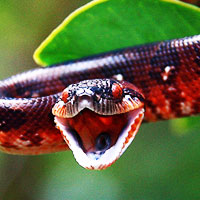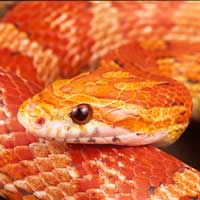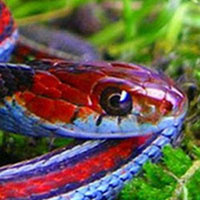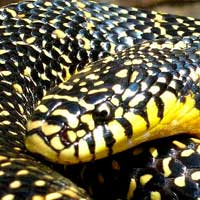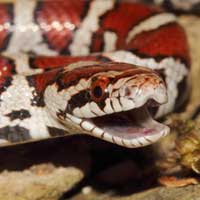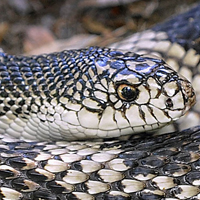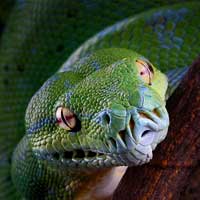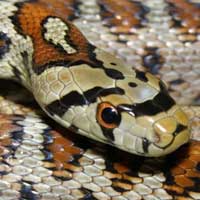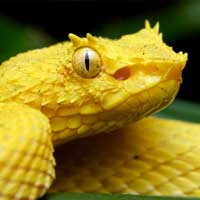Albino California Kingsnake: Everything You Should Know About This Stunning Reptile
The scientific name of the Albino California Kingsnake is Lampropeltis getula californiae. It belongs to the Colubridae family, which is the largest snake family and includes many non-venomous and mildly venomous species.
Scientific Name: Lampropeltis getula californiae
Snake Family: Colubridae
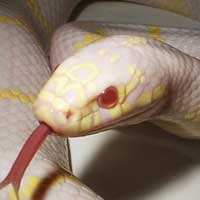
Introduction to the Albino California Kingsnake
The Albino California Kingsnake (Lampropeltis getula californiae) is a strikingly beautiful and highly sought-after snake among reptile enthusiasts. Known for its vibrant white and yellow patterning due to its lack of melanin, this non-venomous snake is a gentle and manageable pet. Native to the United States, it is a hardy species that thrives in captivity with proper care.
Understanding the Habitat of the Albino California Kingsnake
Albino California Kingsnakes are highly adaptable and can thrive in a variety of environments. In the wild, they inhabit regions across California and the southwestern United States, favoring a mix of terrains.
Preferred Habitat Features:
- Dry grasslands and scrublands
- Woodlands and forests
- Desert edges with rocky terrain
- Riversides and agricultural areas
| Region | Habitat Type | Key Features |
|---|---|---|
| California | Grasslands and woodlands | Mild climate, abundant hiding spots |
| Southwestern USA | Desert edges | Dry terrain, sparse vegetation |
What Does the Albino California Kingsnake Eat?
The Albino California Kingsnake is an opportunistic feeder, with a diet that includes a wide range of prey. Its adaptability as a predator is one of the reasons it thrives both in the wild and captivity.
Common Diet:
- Rodents such as mice and small rats
- Birds and their eggs
- Reptiles, including other snakes
- Amphibians like frogs
In captivity, feeding pre-killed or frozen-thawed rodents is recommended for safety and convenience. Juveniles should be fed every 5-7 days, while adults typically eat every 10-14 days.
Behavior and Temperament of the Albino California Kingsnake
Known for its curious and active nature, the Albino California Kingsnake is generally a docile species. However, like all snakes, it may exhibit defensive behavior when threatened.
Key Behavioral Traits:
- Diurnal but can exhibit crepuscular activity
- Non-aggressive and easy to handle
- May coil and vibrate its tail when feeling defensive
- Highly inquisitive and active explorers
With consistent handling, these snakes often become comfortable with human interaction, making them an ideal choice for beginners and experienced keepers alike.
Health and Lifespan of the Albino California Kingsnake
Albino California Kingsnakes are known for their robust health and longevity. With proper care, they can live up to 20 years in captivity, making them a long-term commitment for reptile enthusiasts.
Common Health Concerns:
- Respiratory infections caused by improper humidity
- Shedding problems due to low humidity levels
- Parasites, especially in wild-caught specimens
Maintaining an enclosure with a temperature gradient of 75-85°F and providing fresh water for drinking and soaking are essential for their health. Regular check-ups with a reptile veterinarian are also recommended.
Reproductive Traits of the Albino California Kingsnake
Albino California Kingsnakes are oviparous, meaning they lay eggs. Breeding typically occurs in the spring, with egg-laying in early summer.
Reproductive Details:
- Mating season: Spring
- Clutch size: 6-15 eggs
- Incubation period: 50-60 days
- Hatchlings are independent from birth
In captivity, successful breeding requires simulating seasonal changes and providing a suitable nesting area. Eggs should be incubated at 82-84°F for optimal hatching success.
How to Handle and Care for the Albino California Kingsnake
Caring for an Albino California Kingsnake involves creating an environment that mimics its natural habitat and providing consistent, gentle handling.
Handling and Care Tips:
- Handle regularly to build trust
- Provide an enclosure with hiding spots and climbing branches
- Maintain a clean environment with proper humidity levels
- Offer a varied diet to ensure balanced nutrition
With the right care, these snakes can thrive and provide years of enjoyment for reptile enthusiasts, showcasing their beauty and unique personality.
